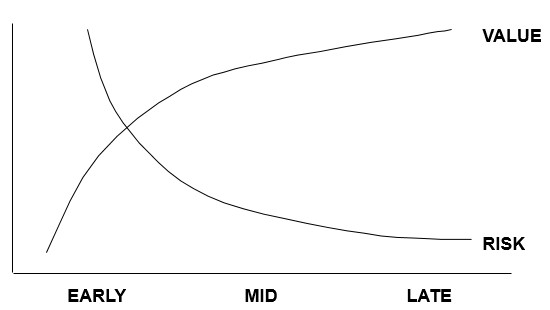LICENSING VS. START-UP
1-2% of all technologies from research institutions can become successful start-up companies.
Considerations:
- Industry Structure
- Competing technologies
- Size of market
- Product profitability
- Cost to develop product, bring to market
- Ability to Raise Capital
INVENTOR DECISIONS
- Licensing or Sale to Third Party Company
- Less hassle, the “hands-off” path (relatively speaking).
- Less opportunity for return.
- Less personal and financial exposure and risk.
- Less control, and ego-identity.
- Participation in a Spin-off or Start-up venture
- Likely to demand a career shift.
- Maximum potential for gain (and risk).
- Opportunity to stay with the invention throughout its life cycle.
Technology:
- Clear, exclusive access to technology
- Usually obtained through license(s)
- Provision for technology transfer
- inventor joins company
- inventor consults with company
- company has access to inventor’s research facilities
People:
- Commercial Staff (CEO)--credibility at raising money, building a business, etc.
- Technical Staff--experienced in specific technology & product development
Capital:

- Raised in stages
- Requires Business Plan
- Market Opportunity--Technology⁄ Solution to Opportunity
- Development Plan--Marketing Plan
- Management
- “early stage”: Founders, Family and Friends; Scientific Institutions; Government programs; “Angels”; Corporations; Venture Capital Funds

Exit:
- Sale of company to larger company in same industry
- Public stock offering: Initial Public Offering (IPO)